#samoadive
Explore tagged Tumblr posts
Photo
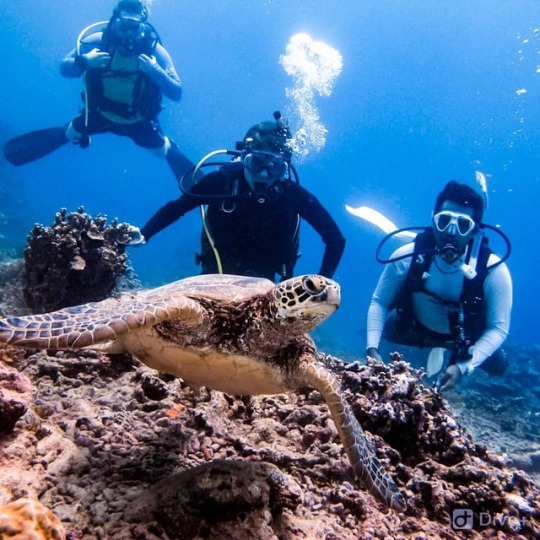
Doing the #padi. (pictures of divers looking at marine animals) ha ha... Beautiful.. #padi5starsamoa #padisamoa #divinginsamoa #3at5 #samoadive #underwater #forgottenbaytour #turtle #turtlepower #undiciplineddm #divesamoa #itswhatwedo #bydivers4divers #pdasamoa @notonegoro_yk @thibault.lepivain (at Fagaloa, Samoa) https://www.instagram.com/samoadive/p/BqS4dd-he6_/?utm_source=ig_tumblr_share&igshid=12rtb129hp07c
#padi#padi5starsamoa#padisamoa#divinginsamoa#3at5#samoadive#underwater#forgottenbaytour#turtle#turtlepower#undiciplineddm#divesamoa#itswhatwedo#bydivers4divers#pdasamoa
0 notes
Text
RECENT MASS BIRD DEATHS AT SAMBHAR LAKE, RAJASTHAN, INDIA: New Challenges for Sustainability in the Face of Extreme Climate Events
The dilemma of how to harmonise the legitimate needs and insatiable wants of human beings, with the simple imperatives of nature, has come to the fore as never before. Over the last three hundred years following the industrial revolution, whenever collateral damage has been done to nature – the hundreds of species of plant and animal/insect life rendered extinct almost on a daily basis – it has been blithely seen as an inseparable part of the superior and inexorable striving for human ‘progress’, whether defined as wealth generation, ever higher levels of consumption, technological advancement or just plain economic development.
It is only now, in the panic and insecurity created by the suddenly escalating effects of climate change worldwide that are putting the survival of the human species itself into question for the first time, that we are being forced to pause and think of how both macro policies of governments and everyday actions by individuals are affecting the fragile sustainability of the planet.
One of the simple imperatives of birds – a vitally important part of nature - is that they need warmth during the cold winter months; for this, they are willing to put their lives on the line and fly thousands of miles to where the warmth is. Thus, November to March is the prime time for birds from the cold Northern countries to migrate to the warmer climates in the South; with the onset of the spring in their permanent northern homes, they make the arduous journey back.
What they need when they arrive here is not only warm weather and the assured presence of safe water and food, but also peace and calm and freedom from non-bird, i.e., human, pollution in the form of artificial noise and toxic commercial activity. The intrusion of loud human activity and human-generated industrial, chemical and electronic pollution have the effect of killing birds, at worst, or at best driving them further away from human habitats and ever deeper into the interiors of their once-pristine habitats.
For centuries, birds have used their instinct, knowledge and experience to identify certain habitats as conducive destinations for their migratory journeys. In Rajasthan, two such habitats have offered safe havens. One is the national bird sanctuary at Bharatpur and the other is the Sambhar Lake.
The Keoladeo Bird Sanctuary at Bharatpur (better known as the Bharatpur Bird Sanctuary) is reputedly the premier Asian destination for migratory birds, and has been declared a UNESCO natural heritage site for this reason. It is a sad commentary on our anthropocentrism that this wondrous sanctuary, almost within stone’s throw of the Taj Mahal in Agra, is much less well known than the man-made “wonder of the world”.
The other habitat in Rajasthan that receives migratory birds in significant numbers (it is a lesser site than Keoladeo in this regard) are the wetlands that comprise the Sambhar Lake. The Sambhar Lake is a 220 sq, km area salt lake that is situated about 80 kms from Jaipur. Reputedly the largest inland salt lake in the country and an important site for both local birds and winter migrants, Sambhar is the only other Ramsar site in Rajasthan besides Keoladeo. (Ramsar sites are ‘wetlands of international importance’ listed under the Ramsar Convention of 1971, an international treaty for conservation and sustainable use of wetlands (it was signed at Ramsar in Iran, hence the name). The Convention’s mission is “the conservation and wise use of all wetlands through local and national actions and international cooperation, as a contribution towards achieving sustainable development throughout the world”. There are 27 listed Ramsar sites in India, most of them in Jammu and Kashmir, out of a total of 2100 worldwide (https://en.wikipedia.org/wiki/List_of_Ramsar_sites_in_India)
Despite its designation as a fragile ecosystem, Sambhar has faced gross neglect. What the Sambhar Lake is better known for is its contribution to human welfare and entertainment. It is one of the most important sources of salt production in India, and reportedly accounts for almost 9 per cent of the country’s total salt production. It is also a huge favourite for Bollywood shoots, which have used its surreal landscape to good effect. Indeed, it is quite possible that until the 20,000 bird deaths within the space of a week this month, few people in India or elsewhere reading newspapers had even heard of Sambhar at all.
Sambhar is the favourite landing place for pink flamingos that arrive there during the monsoons. Other migratory birds from northern Asia and Europe that arrive for the winter are, notably, the Ruddy Shelduck, Black-winged Stilt, Temmink’s Stint, Northern Shoveler, Common Teal, Northern Pintail, Gadwall, Black/brown-Headed Gull, Gull-billed Tern, Pallas’s Gull, Pied Avocet, Ruff, Common Redshank, Marsh Sandpiper, Wood Sandpiper, Common Sandpiper, Lesser Sand Plover, Little Ringed Plover, Kentish Plover, Common Coot, Green Bee-eater, Black-winged Kite, Lesser Whistling Duck, and Mallards (https://www.conservationindia.org/gallery/thousands-of-birds-found-dead-around-sambhar-lake-rajasthan). All of these latter birds count among the recent deaths.
What brings migratory birds here are the water, with its marine and plant resources. Formed out of a natural depression and surrounded by the Aravali Hills, the lake bed is richly silted in salts which rise to the surface with evaporation. The waters of five streams feed the lake –Rupangarh and Mendha, the main ones, and the lesser Samoad, Khari and Khandela – and annual monsoon rains give fresh life to the waters. The specialized algae and bacteria growing in the lake provide striking water colours – that also impart their distinctive hues to the salt - and support the lake ecology in the form of teeming populations of small fish and algae that, in turn, sustain the migrating waterfowl. Interestingly, almost all the mass deaths this month were of insectivorous and omnivorous species. The herbivorous species survived.
The immediate cause of the mass deaths has been identified by scientists at the Indian Veterinary Research Institute in Izatnagar, Uttar Pradesh, as Avian Botulism, i.e., a neuromuscular illness caused by a natural toxin – Botulinum - produced by a bacteria — Clostridium botulinum which is paralyses the muscles and is an often fatal disease for birds. Clostridium botulin produces the toxin when it starts reproducing. The bacteria is commonly found in the soil, river, and sea water. There are reportedly around eight types — A, B, C1, C2, D, E, F, and G — of botulinum toxin and they are distinguishable when diagnosed. Common to all types of toxins is that they attack the neurons, which in turn leads to muscle paralysis. Botulinum affects both humans and animals, but the type of the toxin varies; botulinum C in birds and A, B and E in humans.
The toxin has been recognised as a major cause of mortality in wild birds since the 1900s. Thus, mass bird deaths, while a tragic occurrence, are apparently not totally unusual, and have been known to happen in other parts of the world. For example, reportedly 7,000 water birds died in Lake Michigan in 2007 and 2008, followed by another 4,000 in 2012. In the wake of the Lake Michigan deaths, studies conducted by the U.S. Government’s National Wildlife Health Center identified several environmental factors - including pH level, salinity, temperature, and oxidation-reduction potential in the sediments and water - as significant factors influencing the likelihood of botulism outbreaks in wetlands.
The Indian Veterinary Research Institute’s diagnosis is that November’s outbreak of avian botulism that caused the mass deaths at Sambhar was caused by the climate. Water levels at Sambhar were fluctuating throughout the year. While it was a particularly hot and dry summer, the monsoon was unusually plentiful. As a result, the water level reached the lake bed after a gap of 20 years. The good monsoon provided a favourable environment for the bacteria – which need anaerobic (absence of oxygen) conditions, as they do not grow in acidic conditions - to spread. The temperature of the water was about 25 degree Celsius, and its pH ranged between 7.4- 9.84. Bacteria growth also requires a nutrient-rich substrate, like areas with large amounts of decaying plant or animal materials. The monsoon had brought with it a large population of crustaceans (like shrimps, crabs, and prawns), invertebrates (snails) and plankton (like algae), living organisms capable of hosting the bacteria for a long period of time. According to reports, the bacteria is also found in the gills and digestive tracts of healthy fish. It reproduces through spores and these spores can remain dormant for years. They are resistant to temperature changes and drying. And when conditions are favourable, the spores get activated. The IVRI report noted that after the monsoon, when the water levels receded, there might have been an increase in salinity levels which could have led to the death of these living organisms. At this point in time, the spores could have been activated. (https://www.downtoearth.org.in/news/climate-change/avian-botulism-killed-18-000-birds-at-sambhar-govt-report-67866).
According to another theory, ‘a bird-to-bird cycle’ could also have led to the tragedy. In such an event, maggots feeding on dead birds can concentrate the toxin. Birds feeding on dead birds can get affected. This might explain the deaths mainly of omnivorous and insectivorous birds and the successful survival of herbivorous birds at Sambhar.
Scientists believe that botulism outbreaks are likely to become more and more frequent as climate change alters wetland conditions to favour bacteria and pathogens. Previous studies have found that outbreaks tend to occur when average temperatures are above 21 degrees Celsius, and during droughts. Given the recent evidence of unabated global warming, all of this is cause for anxiety about the future of our wetlands as havens for birds.
The bird deaths have also set off a public scrutiny of the state of affairs at Sambhar Lake. Benignly overlooked by everybody, the conditions prevailing there would seem to be in total violation of the Ramsar Convention. The Convention requires that nations signing in to report changes if any occurring in the natural environment of their designated wetlands, whether brought about by natural causes or man-made. The scrutiny following the mass bird deaths found that in addition to the monopoly licence given to the sole government-owned salt extraction company - Sambhar Salts Ltd., a joint venture of Hindustan Salts Ltd. and the state government - several illegal and unregulated private parties have also been active at the Lake and are, in fact, extracting far larger quantities than the government unit. This raises the possibility that a potential cause of the bacterial load could be toxicity of the water due to excessive salt extraction through questionable means – for example, multiple borewells have been drilled into the lake bed for extraction of water and their storage in pans for evaporation - by these illegal salt units.
Nor, indeed, is the notionally ‘legal’ government unit totally blameless. Among other sins, people on the ground might well be in collusion with the private units for shared profits from the private salt extraction. It has also come to light that this government-owned salt production unit has signed a contract with a private event management company, selling all commercial and tourism rights to it. All in the name of promoting tourism. More investigations – if they ever get done and followed up - will likely tell us what further damage will be laid at the door of these fragile wetlands by uninformed ‘tourism promotion’ plans, and commercial projects driven solely by short-term monetary profits.
In the Pichavaram Mangroves – the second largest mangrove forest in the country, second only to the Sunderbans in Bengal - that I visited in Tamil Nadu in south India – located close to the temple town of Chidambaram - permission given to resorts to operate on the shores of the mangroves, and to companies for the erection of cellphone towers – another case of pandering to insatiable human greed - have already had the effect of frightening away considerable numbers of the water bird population and pushing them deeper into the undergrowth. The resorts have since been shut down (but ugly evidence of their former presence continue to dot the shore in the form of abandoned, decaying buildings). But the cellphone towers are still active, and other ‘tourism’ plans are on the government’s anvil (no doubt on the grounds that money needs to be raised for conservation) (https://www.savista.com/worlds-second-largest-mangrove-forest-pichavaram-tamil-nadu/).
No tourism in sensitive natural areas must be planned for without active consultation with and active oversight by naturalists with the necessary professional knowledge and expertise. It is unfortunate that Public-Private Partnerships in vital projects are always seen only in terms of government and private interests. There is need to include another element to the ‘Public’ component, in the case of projects where natural heritage is involved, namely conservationists/citizen-activists/environmental scientists/lawyers specialising in environmental law/environmental journalists – people who can collectively muster the expertise and commitment to bring knowledge, scrutiny and public debate to bear on interlinked issues of human and natural survival.
#sustainability#climate change#mass bird deaths sambhar lake rajasthan india wetlands fragile ecosystems salt lake natural heritage environmental activism
0 notes
Photo
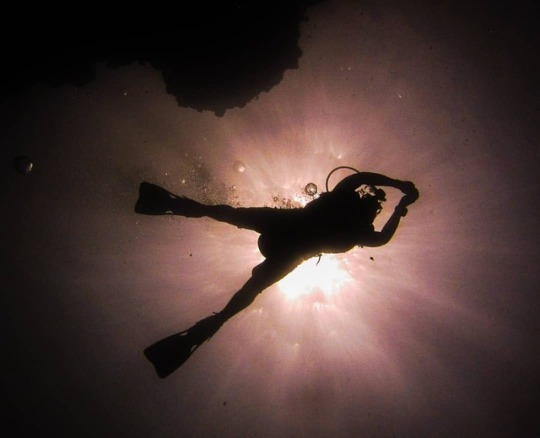
I'll just leave this here. #tytythediveguy #3at5 #divinginsamoa #trusteddive #padi5starsamoa #divesamoa #samoadive #ballin #bydivers4divers #itswhatwedo pc: @island_palagi https://www.instagram.com/samoadive/p/BqGsYebB48B/?utm_source=ig_tumblr_share&igshid=xllm0y8iajeo
#tytythediveguy#3at5#divinginsamoa#trusteddive#padi5starsamoa#divesamoa#samoadive#ballin#bydivers4divers#itswhatwedo
0 notes
Photo
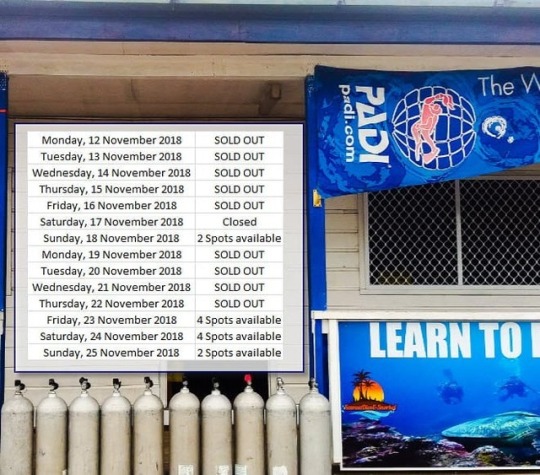
Our availability for fun dives over the next few weeks. Even if we can't take you, call or email for the best advice on where to go. #trusteddive #3at5 #divinginsamoa #padisamoa #padi5starsamoa #divesamoa #samoadive #ballin #bydivers4divers https://www.instagram.com/samoadive/p/Bp7_wdEhdcM/?utm_source=ig_tumblr_share&igshid=lsfvo6g047jw
0 notes
Photo
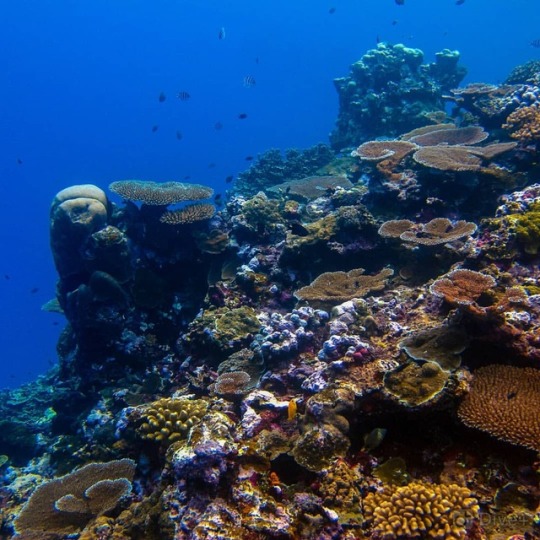
Bit of colour for your weekend... You're welcome. #thebrokenear #forgottenbaytour #3at5 #padisamoa #padi5star #showsomelove #thediveguysamoa #divesamoa #samoadive #itswhatwedo #underwater #undiciplineddm pc: #tytythediveguy #samoa #weekend #coral #livecoral #samoadive https://www.instagram.com/samoadive/p/BpX7DuOhc9W/?utm_source=ig_tumblr_share&igshid=1cc49ypo2nw05
#thebrokenear#forgottenbaytour#3at5#padisamoa#padi5star#showsomelove#thediveguysamoa#divesamoa#samoadive#itswhatwedo#underwater#undiciplineddm#tytythediveguy#samoa#weekend#coral#livecoral
0 notes
Photo
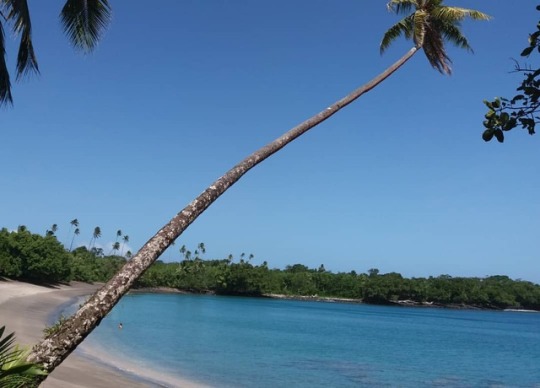
This is the reason why we have dive tours out of town and not dive in town. What is your view like? #perfect #divinginsamoa #3at5 #padisamoa #padi5star #tripadvisorexcellence #padiawardwinners #private #apia #samoadive #divesamoa #divesamoanstyle #notordinary #notordinary #notallaboutmoney #bydiversfordivers #itsallwedo @taramuscat @samoadive https://www.instagram.com/p/Bmzk-McA1x9/?utm_source=ig_tumblr_share&igshid=1lverdu2fhun6
#perfect#divinginsamoa#3at5#padisamoa#padi5star#tripadvisorexcellence#padiawardwinners#private#apia#samoadive#divesamoa#divesamoanstyle#notordinary#notallaboutmoney#bydiversfordivers#itsallwedo
0 notes
Photo

Evidence finally. I have been telling people we see them, but no one believes us. The famed humphead wrasse, is a young adult, 1.5m long, still have growing to go. If you catch one, please release. #humpheadwrasse #samoa #underwater #turtlepower #thediveguysamoa #3at5 #padisamoa #padi5star #showsomelove #divinginsamoa #samoadive #divesamoa pc:@msg_makes_my_feet_hot
#showsomelove#padi5star#samoa#divinginsamoa#samoadive#turtlepower#thediveguysamoa#3at5#underwater#padisamoa#humpheadwrasse#divesamoa
0 notes
Photo

Our MVPs, our underwater children. Are you a diver yet? #3at5 #padisamoa #padi5star #showsomelove #thediveguysamoa #forgottenbaytour #underwater #turtlepower #samoa #weekend #samoadive #itswhatwedo #turtle #chillin
#turtlepower#samoadive#samoa#forgottenbaytour#itswhatwedo#thediveguysamoa#weekend#padi5star#turtle#showsomelove#3at5#chillin#padisamoa#underwater
0 notes
Photo

Wonderful, just wonderful. #3at5 #padisamoa #padi5star #showsomelove #thediveguysamoa #forgottenbaytour #divinginsamoa #turtlepower #undiciplineddm #turtle #samoadive #divesamoa #showsomelove PC:@notonegoro_yk
#divinginsamoa#turtle#padi5star#undiciplineddm#forgottenbaytour#samoadive#showsomelove#3at5#divesamoa#thediveguysamoa#padisamoa#turtlepower
0 notes
Photo

Thank you divers and snorkellers. We have been awarded a certificate of excellence from @tripadvisor. Thank you to everyone. The one and only Dive operator in town to recieve ever. If you haven't reviewed, please go on and continue our excellence. #divinginsamoa #3at5 #padisamoa #padi5star #certificateofexcellence #tytythediveguy #thediveguysamoa #forgottenbaytour #endoftheearthtour #aganoatour #samoadive #divesamoa #shorediving @samoatourism (at SamoaDive&Snorkel)
#divesamoa#aganoatour#certificateofexcellence#endoftheearthtour#divinginsamoa#padi5star#tytythediveguy#padisamoa#samoadive#forgottenbaytour#thediveguysamoa#3at5#shorediving
0 notes
Photo

Lazy afternoons after diving. #divinginsamoa #3at5 #padisamoa #padi5star #thediveguysamoa #divesamoa #samoadive #scubasamoa @matarevabeachfales
0 notes
Photo

EAGLE RAY.... DEAD AHEAD.. #3at5 #padisamoa #padi5star #showsomelove #thediveguysamoa #taulaulu #divinginsamoa #samoadive #divesamoa #eagleray #underwater #picoftheday #seki #forgottenbaytour #samoa #workdays
#divinginsamoa#forgottenbaytour#underwater#padi5star#thediveguysamoa#3at5#seki#picoftheday#workdays#divesamoa#padisamoa#showsomelove#eagleray#samoadive#taulaulu#samoa
0 notes
Photo

Beautiful picture, gentle encounter. PC: @simonematucci_intothemareblue_ #3at5 #padisamoa #padi5star #showsomelove #tytythediveguy #divinginsamoa #divesamoa #underwater #samoadive #turtlepower
#showsomelove#underwater#turtlepower#samoadive#padi5star#tytythediveguy#padisamoa#divesamoa#3at5#divinginsamoa
0 notes
Photo

Look, but don't touch. Calm and inquisitive. #divinginsamoa #3at5 #padisamoa #padi5star #showsomelove #thediveguysamoa #forgottenbaytour #underwater #turtlepower #undiciplineddm #turtle #samoadive #divesamoa
#3at5#underwater#undiciplineddm#turtle#padi5star#forgottenbaytour#samoadive#padisamoa#thediveguysamoa#turtlepower#divesamoa#divinginsamoa#showsomelove
0 notes
Photo

Surface interval location. #top5 #divinginsamoa #3at5 #samoa5starpadi #getyourpadihere #samoadive #divesamoa
0 notes
Photo

Turtle power. No feedings, no capture, no gimmicks. Just a natural turtle sanctuary. #forgottenbaytour #turtlepower #tytythediveguy #divinginsamoa #padisamoa #3at5 #samoadive #turtle #untouchedsamoa #samoatourism #100%Samoa
#turtle#divinginsamoa#3at5#untouchedsamoa#100#tytythediveguy#padisamoa#samoatourism#forgottenbaytour#turtlepower#samoadive
0 notes